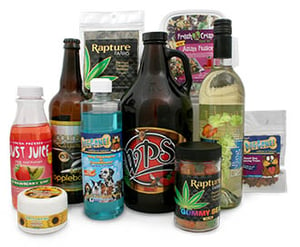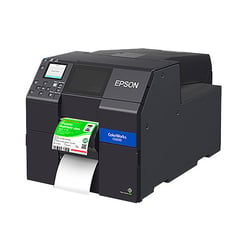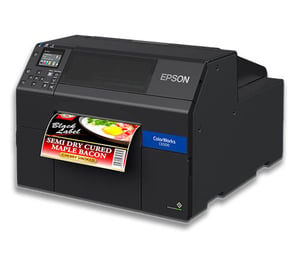
If you've ever utilized a traditional continuous inkjet system, you're likely aware of its efficiency in handling variable information such as date codes or product identification at rapid speeds. While primarily used for informational purposes, readability and scannability, especially for barcodes, are essential.
However, the downside is often the mess it can create. From potential ink leaks to clogged nozzle plates and resulting production downtime, the maintenance and upkeep can sometimes outweigh the benefits of high-speed printing and cost-effectiveness. It's crucial to consider the bigger picture.
 Could there be a better alternative to the constant downtime and maintenance? Enter Weber's Markoprint thermal inkjet systems, a revolutionary type of inkjet coder that utilizes HP ink cartridges instead of bulky ink tanks found in CIJ systems. These Markoprint coders come in various configurations, from single-head, stand-alone coders for simple date code applications to multi-head systems for coding both sides of a carton and larger prints.
Could there be a better alternative to the constant downtime and maintenance? Enter Weber's Markoprint thermal inkjet systems, a revolutionary type of inkjet coder that utilizes HP ink cartridges instead of bulky ink tanks found in CIJ systems. These Markoprint coders come in various configurations, from single-head, stand-alone coders for simple date code applications to multi-head systems for coding both sides of a carton and larger prints.
So, what sets these Markoprint coders apart as "no-mess" solutions?
The difference is the HP cartridge.
Conventional CIJ systems depend on a large ink reservoir to provide the ink for printing, along with a separate make-up tank to dilute the ink and clean the printhead after printing. Any surplus ink and make-up are stored within the coder, necessitating shutdowns for refills when levels drop or the storage reaches its limit. Proper management of these potentially hazardous materials is vital, and the task of replenishing and restarting the system can be time intensive.
Prior to shutdown, a CIJ printhead must be meticulously cleaned to prevent clogs. If a blockage does occur, significant time and effort are needed to restore functionality. Depending on the type of ink used, this maintenance task can quickly turn into a messy and labor-intensive chore.
The Markoprint TIJ system stands out in its approach when utilizing the HP cartridge. The cartridge has the flexibility to be filled with a diverse range of inks, proving its flexibility for various substrates. The cartridge seamlessly integrates with the Markoprint printhead, requiring no flushing or cleaning. When ink levels run low, simply swap in a new cartridge to resume production instantly. With this system, there are no concerns about clogged heads, ink spills, or wasted time. Each time you insert a new cartridge, it’s like having a fresh printhead.
At the end of the day, simply remove the cartridge out of the Markoprint printer and place the cartridge clip on to the cartridge to avoid clogged nozzles with dried up ink. By morning, your system will be good to go again. If you're switching to a different product the next day, just insert the cartridge with the appropriate ink to match your materials.
Markoprint coders offer a unique solution to avoid messy applications. Instead of only printing directly on products, we have discovered that printing on a label before application yields cleaner and more consistent text and barcodes. This approach eliminates issues with coding on wet surfaces in breweries or dusty cartons in bustling factories.
 Weber Packaging offers optional mounting hardware to connect a Markoprint coder to one of their label applicators upstream before application. They also provide mounting hardware for popular Pack Leader label applicators. As a label passes through the Markoprint coder, the information is printed, instantly dries, and is then applied to the product or carton. The text or barcodes remain legible, and you have the ability to position the printed code wherever desired on your label.
Weber Packaging offers optional mounting hardware to connect a Markoprint coder to one of their label applicators upstream before application. They also provide mounting hardware for popular Pack Leader label applicators. As a label passes through the Markoprint coder, the information is printed, instantly dries, and is then applied to the product or carton. The text or barcodes remain legible, and you have the ability to position the printed code wherever desired on your label.
Cost of ownership.
Concerns often arise regarding the higher cost of TIJ printers compared to traditional CIJ systems. However, when looking at the long-term usage of your new inkjet coder, it's crucial to consider the overall costs involved.
In a CIJ system, the major expenses come from purchasing ink and solvents, which can be quite costly depending on the ink formulation. Handling hazardous MEK solvents with care is essential, and the risk of spills leading to permanent damage is a real concern, potentially resulting in the need to repaint your floors.
On the other hand, Markoprint thermal inkjet systems use cost-effective HP cartridges utilizing water and alcohol-based inks. With each new cartridge, you also receive a fresh printhead, reducing the risk of clogs and maintenance issues. Over a period of one to two years in production, the savings from using HP cartridges become evident, making them a more economical choice in the long run.
The best way to explore total costs of ownership before purchasing or upgrading an inkjet system is to get a quote from a Weber specialist. They can give you a total cost comparison and ink usage costs for your usage. They can show you the iDesign software that comes with the Markoprint coder and explain the benefits of TIJ over CIJ inkjet. Contact Weber and learn more!




 ONE: The Epson C6000A (label cutter) and the C6000P (peeler bar) are the narrow-web version of the series. These printers are engineered for demanding applications deliver dependable commercial inkjet printing that you can count on. The printers can print from 1.0" (25mm) up to 4.25" (108mm) and can print up to 24" (610mm) long. The printers can print in a wide range of quality settings from Maximum Speed (300 x 600) to Maximum Quality (1200 x 1200). Print speeds up to 5" per second on max speed settings.
ONE: The Epson C6000A (label cutter) and the C6000P (peeler bar) are the narrow-web version of the series. These printers are engineered for demanding applications deliver dependable commercial inkjet printing that you can count on. The printers can print from 1.0" (25mm) up to 4.25" (108mm) and can print up to 24" (610mm) long. The printers can print in a wide range of quality settings from Maximum Speed (300 x 600) to Maximum Quality (1200 x 1200). Print speeds up to 5" per second on max speed settings. TWO: The Epson
TWO: The Epson 